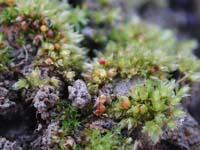Mosses have a more complex genome than expected

The study of the moss genome has shown that moss is more complex than expected. Scientists thought that mosses were genetically simpler than flowering plants. But 20% of the genes found in the moss genome are unpublished so far. This study has studied the moss species Physcomitrella patens. It is estimated to consist of 35,000 genes, 10,000 more than the first plants studied. In addition, special genes appear in the moss genome that are not found in other plants. For example, the species P. patens contains specific genes to resurrect after drought and heal wounds by solar rays.
Researchers believe that in moss genes there may be a key to plant pathway from water to soil. In the beginning, the plants developed in the water, like algae. However, due to competition, some species embarked on the road to land. When they left the aquatic environment behind, they had to look for new ways to capture the water that once surrounded them. At the same time, outside water protection, they had to look for mechanisms to deal with a greater amount of sunlight and protect it from its direct impact. The data obtained indicate that the mosses, like the rest of the terrestrial plants, took these steps. But not all plants developed the same capabilities. For example, mosses did not develop the vascular fluid transport system of flowering plants.





